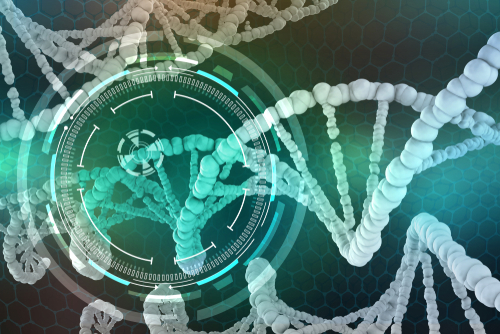Studying Epigenetic Changes Could Lead to New ALS Treatments and Biomarkers, Researchers Suggest

A specific type of genetic alteration — known as epigenetic changes — observed in patients with amyotrophic lateral sclerosis (ALS) may lead to novel treatments and diagnostic tools, according to a review study.
The study, “Epigenetics in amyotrophic lateral sclerosis: a role for histone post-translational modifications in neurodegenerative disease,” appeared in the journal Translational Research.
Epigenetic changes — alterations in gene expression, but not in the gene itself — have recently been associated with ALS development. Although less studied than in other diseases, epigenetic markers are attractive therapeutic targets in ALS as they are pharmaceutically accessible and reversible.
“Epigenetic mechanisms are reversible. If there is an epigenetic problem, you can use a small molecule or peptide drug to counteract the effect and bring it back to normal,” Mariana Torrente, the study’s senior author, said in a press release.
Three key epigenetic mechanisms include DNA methylation — the addition of methyl chemical groups at crucial gene regulatory regions — micro RNAs (miRNA, which are tiny RNA molecules), and modifications in histones (proteins that package and organize cellular DNA).
While DNA methylation can both suppress and favor gene expression, miRNAs cause the degradation of messenger RNA (mRNA). Of note, mRNAs are generated from DNA and are the template for protein production. Alterations in histones — called post-translational modifications (PTMs) — affect gene regulation by controlling the accessibility of DNA to the cellular machinery needed to convert DNA into RNA.
Discuss the latest research in the ALS News Today forums!
Assessments of post-mortem spinal cord tissue from patients with sporadic ALS have shown global alterations in DNA methylation, which could involve both excessive and insufficient presence of methyl groups with corresponding changes in the expression of genes involved in immune and inflammatory responses.
Mice lacking Dnmt3a — a type of enzyme known as DNA methyltransferase that is required for the in vitro development of motor neurons (specialized nerve cells that are progressively lost in ALS) — are hypoactive and perform poorly on tests of neuromuscular function and motor coordination. ALS patients have shown increased levels of Dnmt3a and related enzymes in the brain and spinal cord.
Genome-wide association studies further found genes with differences in their methylation that could impact ALS and frontotemporal dementia (FTD), which is found in a substantial number of people with ALS.
Besides ALS, miRNAs have been associated with neurodegenerative diseases such as Alzheimer’s, Parkinson’s, and Huntington’s. ALS patients have shown altered levels of RNA molecules, such as miR-155 and miR-142, in the spinal cord, which is associated with cell death, immune response, and brain development.
miRNA profiling has been proposed as a biomarker panel for neurodegeneration and ALS, which is supported by differences seen in the white blood cells and plasma of sporadic ALS patients compared with healthy controls.
As for histone PTMs — the current focus of the study — several enzymes involved in these changes have been associated with ALS. Histone deacetylases (HDACs), responsible for the removal of acetyl chemical groups on histones, are one such example and are therapeutic targets in cancer, inflammatory disease, and pulmonary disease.
Patients with ALS have showed altered levels of HDAC11 and HDAC2 mRNA in the brain and spinal cord, while a mouse model of ALS showed a changed cellular localization of HDAC1. Also in mice, levels of SIRT1 — a specific type of HDAC — are lower in nerve cells and higher in muscles. In mice expressing the mutant protein SOD1G93A, partial deletion of HDAC6 induces clumping of SOD1 — a well-known protein implicated in ALS — and increased motor neuron loss, but its overproduction prolongs life span and delays cell death.
In addition, ELP3, a protein that mediates the addition of acetyl groups (acetylation), has been linked with motor neuron degeneration in genetic studies as well as in zebra fish models of ALS. In yeast models, the scientists found decreased acetylation at specific histone spots that matched observations in patients with this disease. These changes were associated with lower RNA levels, thereby reduced gene expression.
Although also exhibiting protein aggregation and cell toxicity, a different yeast model of ALS showed exaggerated acetylation, which suggests that different patterns of histone PTMs may lead to ALS via unique pathways, the team commented.
Among potential ALS therapy routes, blocking HDACs reversed deficits in the transport of molecules along nerve fibers in cells derived from ALS patients, and eased motor neuron degeneration, improved motor function, and provided neuroprotection in mouse models. Phenylbutyrate, a general HDAC inhibitor, prolonged survival in the SOD1G93A ALS mouse model and increased histone acetylation in ALS patients.
Chromatin remodeling enzymes are another potential target. These enzymes, such as Chd1, alter the structure of chromatin — which are made of histones and DNA — and their loss has been linked with decreased production of protective genes and disrupted repair of DNA damage in a fruit fly model of ALS.
“We expect discoveries to come in the next decade will take us beyond establishing the links between ALS and epigenetics and move towards elucidating the precise epigenetic mechanisms associated with disease processes and specific symptoms,” the scientists wrote.
“Pinpointing how epigenetic changes relate to disease can potentially lead to novel diagnostic and therapeutic tools for ALS and other neurodegenerative diseases,” they added.






